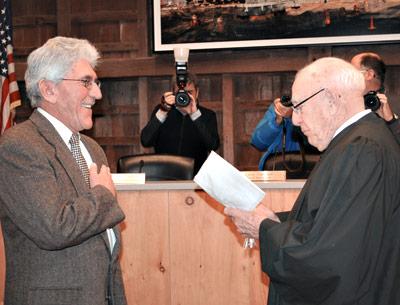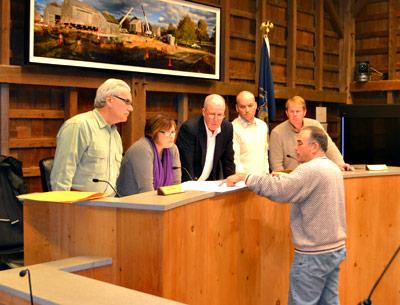Montauk Millionaire’s Row All Lined Up
Montauk Millionaire’s Row All Lined Up
A site plan that would legalize expansions at two of Morgan Neff’s seven cottages on Fort Pond Bay in Montauk is among the applications scheduled for hearings at the East Hampton Town Planning Board’s first meeting of the year on Wednesday at 7 p.m.
Another hearing on the site plan for Crystal Mews, the former Crystal Room property on Pantigo Road in East Hampton, where six units are proposed in two buildings, was noticed incorrectly and will have to be rescheduled. The board will also hear comments Wednesday on a new septic system and interior improvements to the Animal Rescue Fund property on Daniel’s Hole Road in East Hampton, and the Town Lane Estates subdivision in Amagansett, on the east end of that road.
The Neff site plan is now over four years in the making, and has generated some controversy along the way. The modest cottages were once facetiously labeled Millionaire’s Row, a name that stuck. Built as fishermen’s shacks before the zoning code was written, they are now summer rentals that go for between $30,000 and $55,000 for an extended season. The site plan before the planning board is for two of the cottages that were expanded without a building permit, one called the Crowley, which was increased from 122 square feet to 289 square feet, and the other called the Sharkey, to which Mr. Neff added a 480-square-foot deck.
Mr. Neff applied for site plan approval for the Crowley and the Sharkey early in 2013, but had to first go before the zoning board of appeals — the Sharkey because its deck was 121 feet from the beach where 150 feet is required, the Crowley because a crawl space under it is considered a cellar under town code and cellars are forbidden in that zone.
The Sharkey received the variances it needed from that board. The Z.B.A. approved some of the variances Mr. Neff requested for the Crowley, but it specifically denied the request to keep the basement beneath the building. However, the Z.B.A. did give Mr. Neff an out, according to the memo prepared for the Planning Board on the proposal by JoAnne Pahwul, the town’s assistant planning director. Mr. Neff could, she wrote, “excavate the exterior grade along the east foundation wall.” This would, Ms. Pahwul said, change the cellar into a crawl space according to town code.
Mr. Neff’s attorney, Richard Whalen, told the board at its Dec. 11 meeting that his client would agree to the excavation. But there remained one more sticking point: the board voted to require Mr. Neff to submit a revised drawing of the building to reflect the change to the east side grade.
“I’ve waited 300 days. I still don’t have a C. of O.,” Mr. Neff said from the audience.
Patrick Schutte told Mr. Neff that the board was doing its best to move the process along.
Mr. Whalen presented the revised plans to the board later that week.
As for the Crystal Mews, the hearing notice placed in The Star incorrectly included a description of the Animal Rescue Fund property. The Crystal Mews property has a rare zoning status that allows multiple units on one parcel. Mr. Whalen, who represents the owner, the estate of Albert Trages, explained that the approximately 1.5-acre property is one of only four in the town where multiple residences are permitted. The board has been supportive of the plan, but the public will have to wait a few more weeks, until the hearing can be properly noticed, to comment on it.


